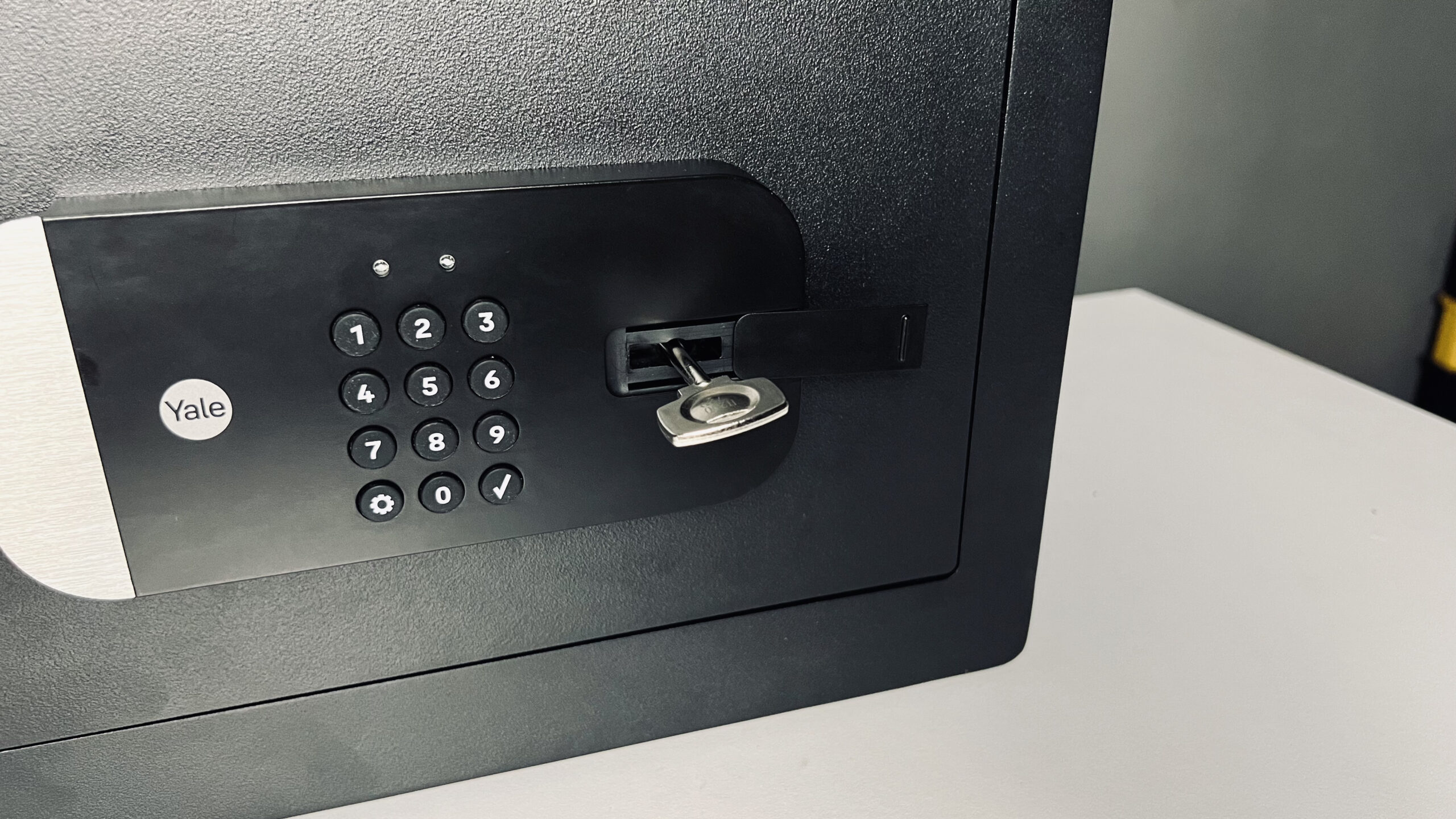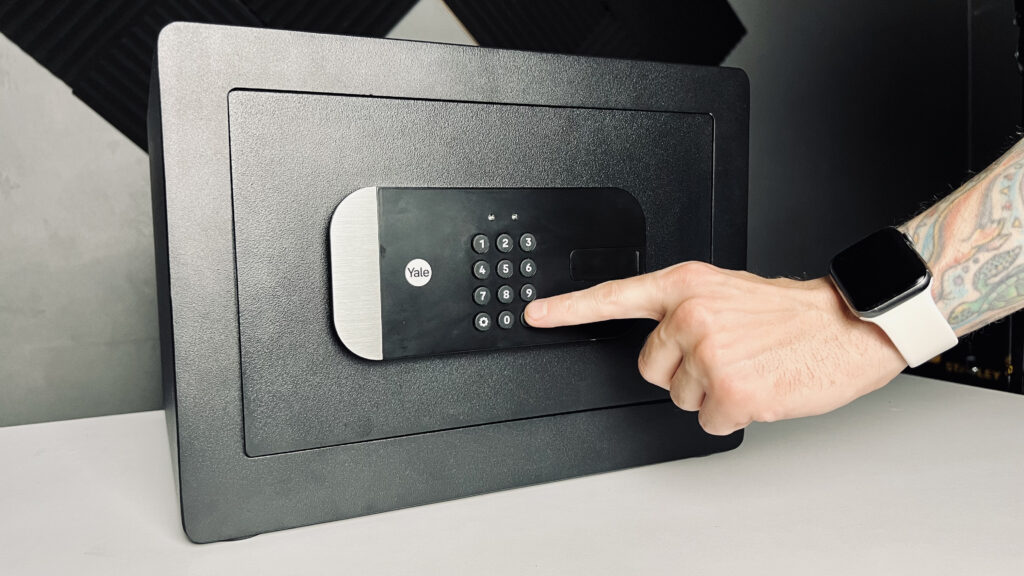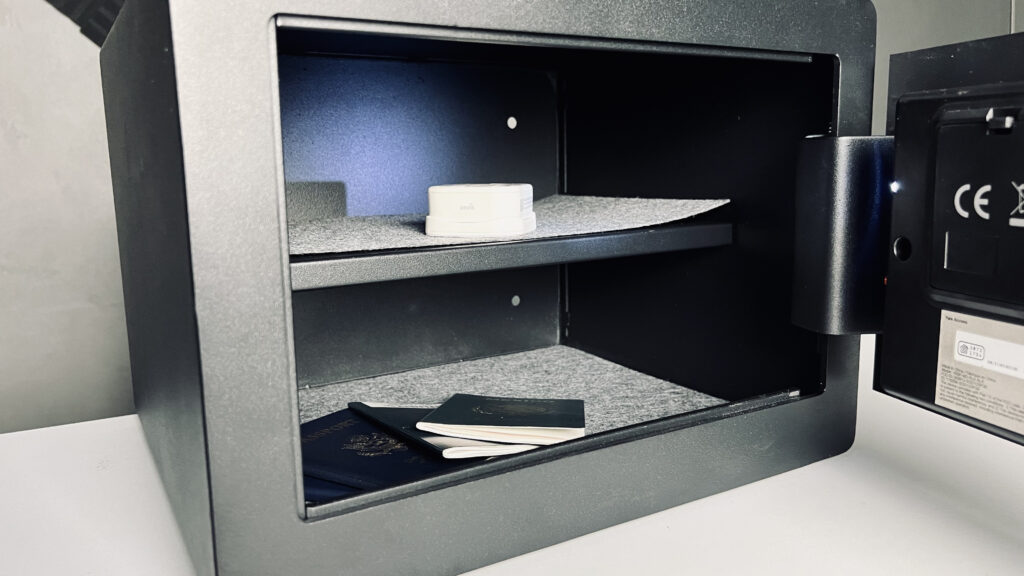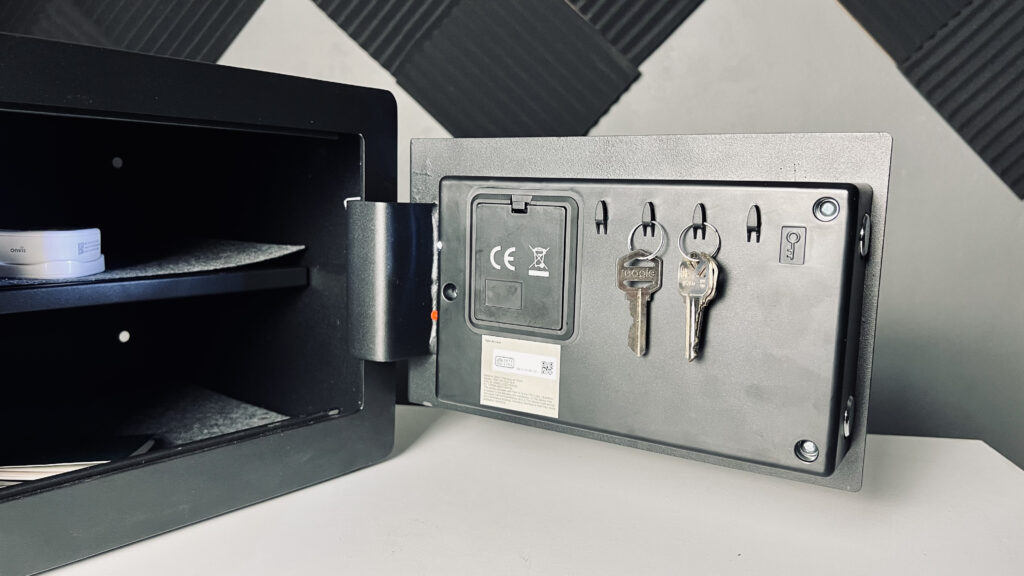One of the downsides of HomeKit is its relatively limited number of product categories. This usually results in some somewhat boring smart devices but other times, manufacturers can put a unique spin on a more conventional accessory type and produce something interesting. The Yale Smart Safe is such a device being Apple Home’s first and only connected strong box, but does your safe really need to be smart?
Yale Smart Safe Features
- Laser-cut, anti-pry alloy steel cabinet safe
- multi-access safe with mechanical key, electronic keypad, or remote access via app
- Interior LED
- 4 interior hooks for organization
- Felt-lined, Removable, non-adjustable shelf
What You Need to Know Before You Buy
- Bluetooth connectivity (WiFi model available; see more below)
- NOT water resistant
- NOT fire resistant
- Requires 4 AA batteries
- Dimensions: 11.8 x 13.8 x 9.8 inches
Is Yale Thinking Inside or Outside the Box?
To state the maybe not-so-obvious, the Yale Smart Safe is the very first safe to work with Apple Home. Granted smart safes are not a product category in HomeKit and it shows up as a lock in your Apple Home app, it’s a very welcomed addition to the platform. Other vendors have come out with lock variations like the Koogeek Smart Fingerprint Padlock, but Yale is the first to integrate a HomeKit lock into a safe.
The first thing you’ll notice when receiving the Yale Smart Safe is that it comes in a fairly large box and is not what I would consider to be light, though I’m sure there are heavier duty safes out there. There isn’t a lot to the unboxing experience, but it does come with anti-shear bolts and a drill template for mounting on both walls and floors. You’ll also get a quick start guide which has an instance of the HomeKit code and a single physical key.
As a safe, The Yale Smart Safe has a number of pretty convenient hardware features. Opening the safe, the storage compartment is nicely illuminated to help you easily find what it is you’re looking for. It also comes with a single shelf which is removable, though not height adjustable. Both the shelf and the bottom include a removable felt liner to help prevent the safe and your valuables from scratches. There are also 4 internal hooks on the door to maximize space and keep it organized.
As a strong box, it’s no slouch. With it’s laser-cut, tamper-resistant door and anti-saw mounting bolts, the Yale Smart Safe won’t be easily broken into or carried off. The safe also locks itself down for one minute after 3 incorrect code attempts while also sounding an alarm. In terms of access, it’s also no wimp with mechanical double-bitted keys and user-assignable keypad access codes, along with remote access via HomeKit or the Yale Access appp with biometric verification and 2-factor authentication.
Bluetooth is Still a Bummer
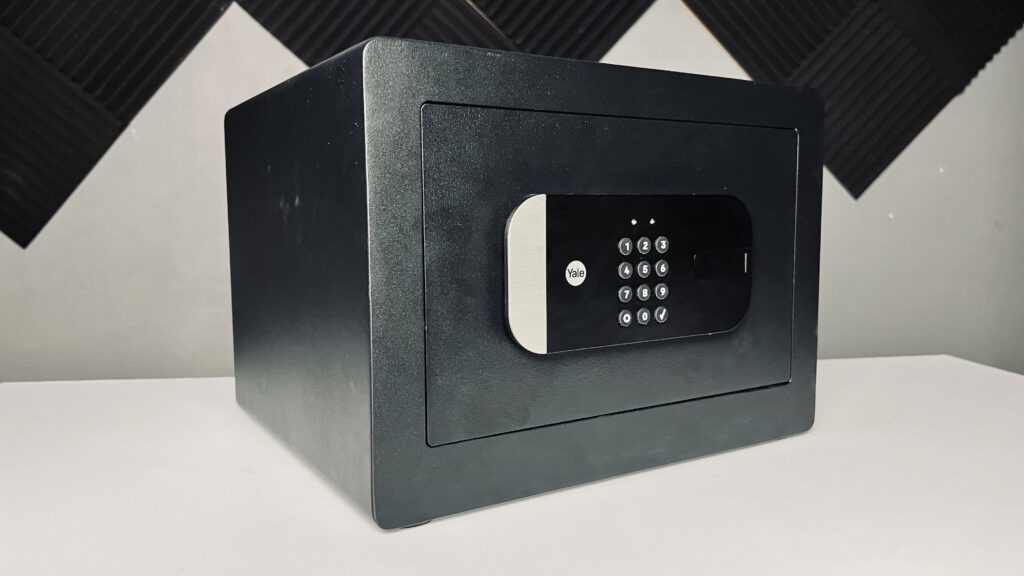
I have been testing the Yale Smart Safe for a number of months now and my connectivity experience with it was not, at least initially, the greatest. While I got it setup in the Yale Access app on the first attempt, getting it into HomeKit was a different story. It seems to me that the Yale QR code and the HomeKit code are maybe a little too close together and therefore I was not able to scan the HomeKit code properly and ended up needing to add it manually. This is not the end of the world, but something of note and a little annoying.
As the days and weeks went by during my testing, I started to notice that the Bluetooth connectivity was not just hit or miss which is not so surprising, but at some point, the safe just stopped responding altogether. I could get it back up and running by soft resetting it by removing a battery and replacing it, but this fix was unfortunately temporary with it failing to respond shortly thereafter. I was ultimately able to resolve the issue by performing a factory reset a couple of times while also restarting my phone and toggling Bluetooth on and off.
I am happy to report, however, that the safe has since been incredibly responsive in both the Yale App, as well as in Apple’s Home app and even with Siri. Obviously this is not at all what you should expect from an Apple Home device, but considering it is now working just fine, I’m sort of OK with it.Y
You Can’t Steal It, but You Can Torch It!
I was definitely disappointed to learn that the Yale Smart Safe is neither fire nor water resistant. I do not think it is unreasonable to expect the electronics of the safe to stand up against flames or flooding, but I do not see how the safe itself and its locking mechanism could not have been made to withstand such disasters. Though I have not any real data to back me up, I would fair to say that fires and water damage pose a greater risk to the security of possessions stored inside a safe than a burglar does, generally speaking. In any event, this is something you will definitely want to bear in mind with this product.
Using the Yale Smart Safe’s Smarts IRL
Like I said, I am a sucker for devices that use limited product categories in unique ways and the Yale Smart Safe certainly is that. The flexibility and added convenience of being able to assign guest access via pin codes and app control on schedules is incredibly useful particularly for small businesses. I should point out here though that if you want to do so remotely, you will need the Yale WiFi Connect bridge. Though you can remotely lock and unlock the safe via Apple Home thanks to a Home hub, in order to modify any of the safe’s non-HomeKit settings, you’ll need to be with in Bluetooth range or have the the WiFi Connect bridge installed.
However, this is really the only way I found myself using the safe’s connected capabilities and this was only at the beginning when I gave my wife access and set up our pin codes. It is honestly significantly faster to use your personalized pin code to access the lock than it is to pull up an app or even use Siri.
I also appreciate the open and close notifications via Apple Home and the low battery alerts will be quite helpful, but I have yet to receive them.
The Smart Safe with Yale Access & Apple Home apps
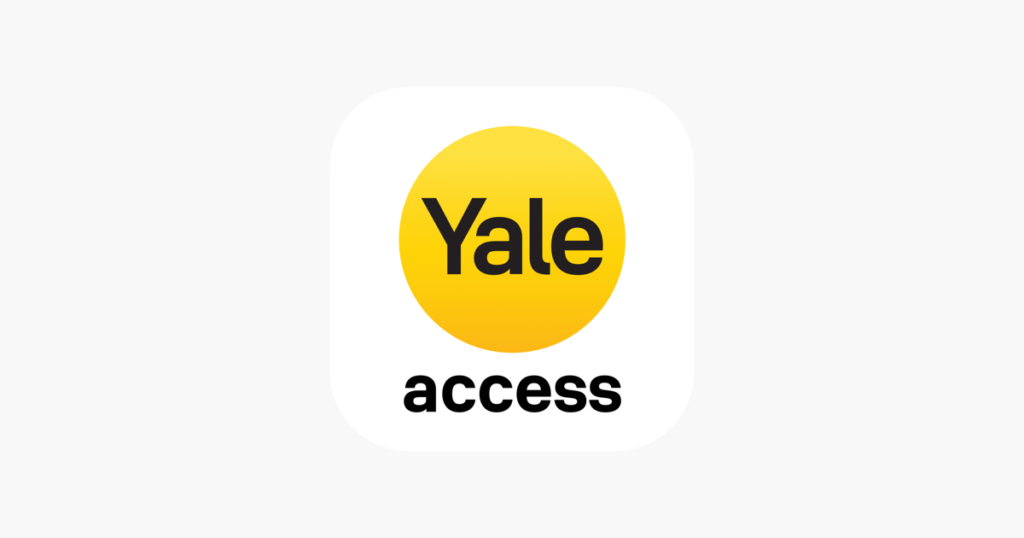
The Yale Access app is quite usable and you will need it to get up and running and make adjustments to the safe as is the case with most all smart locks in HomeKit. You can set up different homes and assign different locks to different rooms, though admittedly this functionality is a little clunky and could use a reworking.
As for the Smart Safe itself, you have what Yale calls its ‘Guest List’ which is the tab under which you manage your guests’ access permissions, pin codes and schedules. Scheduling is quite granular allowing you to define time blocks on different days of the week.
In the lock’s settings, you can modify a variety of characteristics like smart alerts, biometric verification via your device, and a few other settings as well.
There is less to talk about when it comes to Apple Home though. We can lock and unlock the safe and change its HomeKit-specific definitions like name, room, etc. It is important to note that any smart lock, including the Yale Smart Safe, are considered secured accessories in HomeKit meaning that you will need to have your iPhone unlocked in order to have access to the lock.
A last point I want to make here is that the battery level of the safe is not displayed in either app. For something as important as a locking mechanism this should absolutely be easily found, yet it is not.
Accessibility
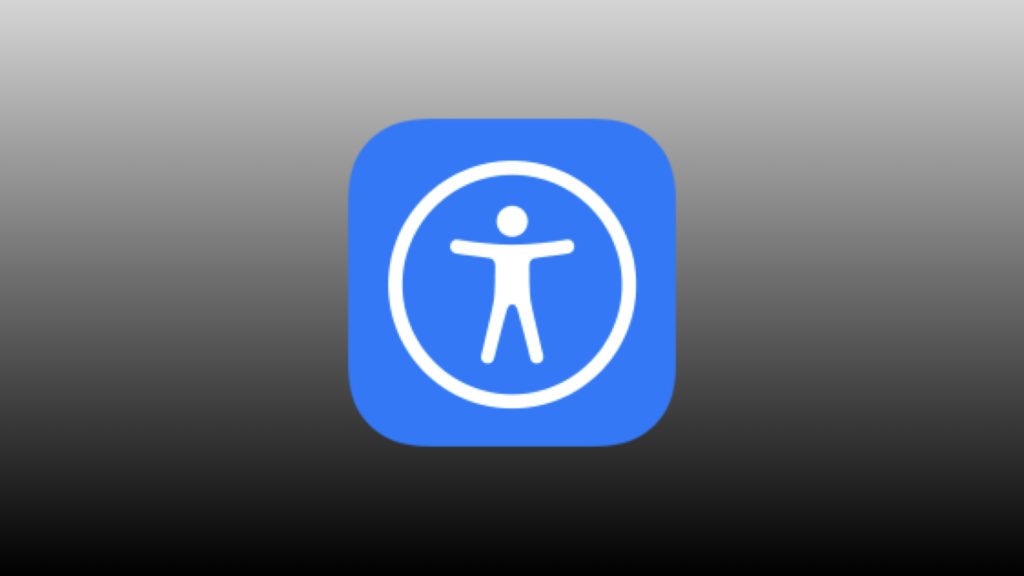
Starting off on the hardware front, I am very happy to see a physical button keypad, as opposed to a touch-sensitive one. The marketing material I reviewed before receiving my unit did not make this clear and I was a little nervous. The safe does provide audio feedback when locked and unlocked or when a pin code is incorrectly entered.
The template used to mark for drilling holes to mount the safe is unsurprisingly not tactile, but you can easily use a punch to physically mark out the layout of the mounting holes or measure them as well.
As a blind guy with little light perception, I’ve learned to adapt to scanning QR codes usually opting to scan them with the Camera app using the ultra-wide lens to encompass as much field as possible, but I struggled with precisely locating the Yale setup code and HomeKit code when trying to add the safe to Apple Home. My phone wound up finding the Yale QR which is not the same as the HomeKit one. I suspect this is due to the relative proximity of the two codes to one another. After literally, more than 30 minutes trying to scan the code from both the safe and the user manual, I decided to cut my losses and seek sighted help. It turns out, however, that even with sighted assistance, we found difficulties scanning the HomeKit code. Ultimately, we wound up punching in the 8-digit code manually like a Neanderthal. This is one of those occasions where a slight modification to the printed labeled would have improved the user experience across the board, not just for those taking advantage of accessible design.
I’ve come to be weary when using a new app, but I have to admit that I was pretty impressed with the Yale Access app’s accessibility. During my testing, I did not run into any accessibility issues that prevented me from interacting fully with the “smarts” of the Yale Smart Safe.
Given this, the app does commit a couple of cardinal WCAG sins. The first and by far most prevalent as it is a recurring theme throughout the app is the lack of use of real headings. I can only assume these headings are differentiated visually with larger or bold text, but since they are not semantically tagged correctly, screen reader users see these as regular text.
This is exaserbated by the lack of buttons being labeled as buttons. With the exception of one or two cases, all app elements were labeled with text, but the vast majority of buttons are not read as buttons and therefore it is not apparent that they are actionable.
So while all aspects of the app are technically accessible to screen reader users, these two easily remedied faults result in an inefficient and slightly disconcerting user experience. Thankfully, once you set up any guest access and personal pins, you can interact with the Yale Smart Safe using Apple Home automations and Siri.
The Final Verdict
There is a lot to like about the Yale Smart Safe. It’s solidly built, functions as advertised, and can definitely protect your smaller valuables from immediate theft. Let’s also not forget that it is currently the sole HomeKit-enabled safe out there. The lack of a fingerprint reader was a definite miss by Yale. Additionally, fire and water resistance are almost essential for this sized home safe. Given its hefty price tag, it is undoubtedly an investment that you will not want to take lightly, but might be worth the investment if only for the peace of mind of knowing your safe is safe from anywhere in the world.
We use income-earning affiliate links.
We may receive a small commission on purchases made using links on this page at no extra cost to you.
